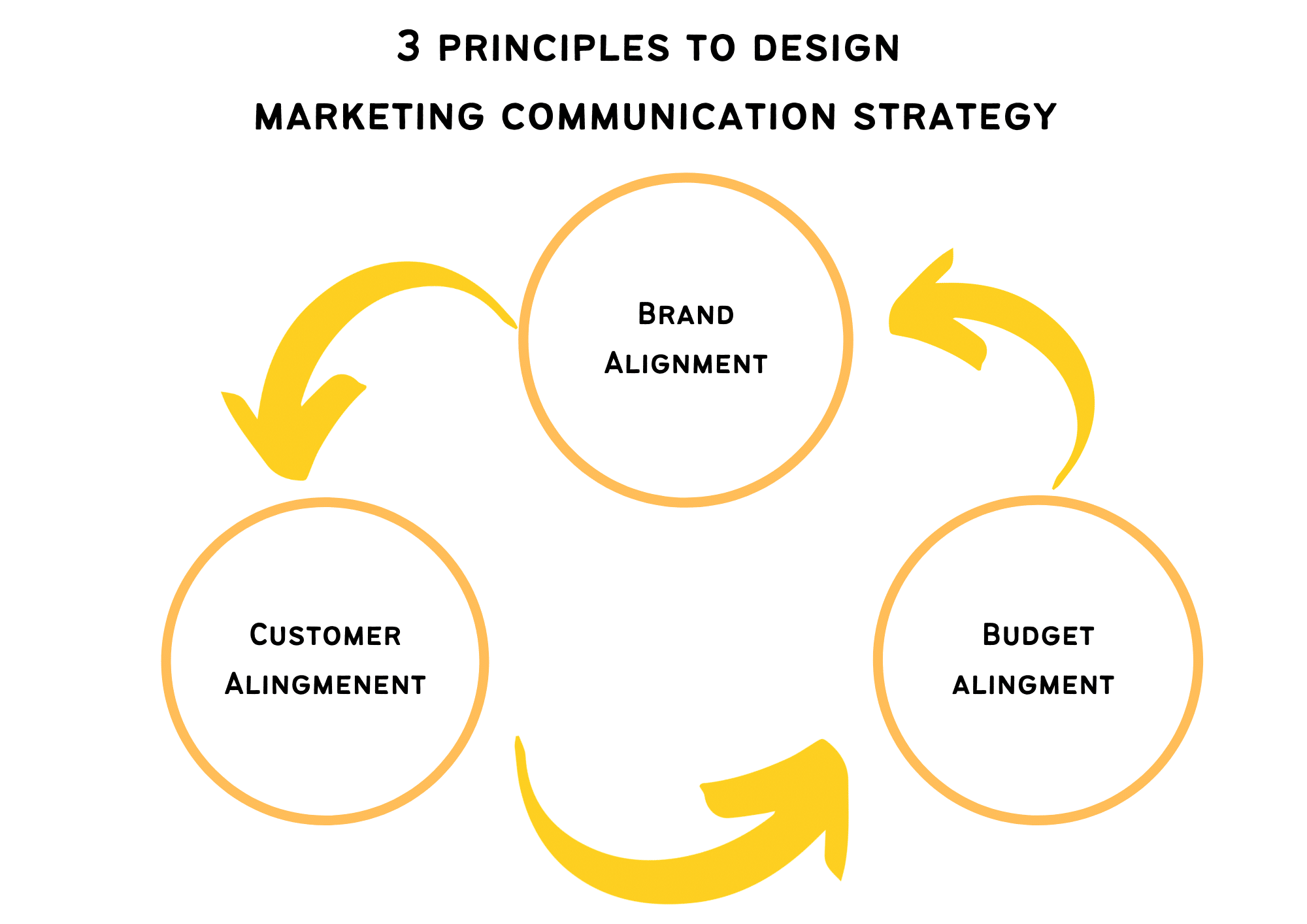Introduction
Previously we have seen the various elements involved in marketing communications and how these elements interact together to provide for a compelling marketing communication mix. A marketing communication strategy helps us put marketing communication mix to effect.
What is a marketing communication strategy?
A company's marketing communications strategy is how they employ various forms of communication to reach their target market. It involves their message (what they want to say), the medium (how they want to say it), and the audience (who they want to say it to or to whom their message is reaching)
The complete range of activities a firm will do to advertise its products is defined by its marketing communications strategy. Everything from paid marketing to media relations falls under this category.
We saw the eight different elements of marketing communication strategy. All of those add up to building a marketing communication strategy. Let’s now see the principles which need to be in sync to design a perfect marketing communication strategy.
Guiding principles to design a marketing communication strategy
A synergy has to be attained between three principles to create a marketing communication strategy that would reap the best possible outcome for the firm. The three principles to follow are as follows :
- Brand alignment: The brand perception of whichever marketing channel a company chooses to convey their message should be the same as the perception the company is trying to build on. For example, a Ferrari cannot be seen to be giving an advertisement in Dainkin Bhaskar weekly.
- Customer Alignment: the old adage of the market is where the customer applies here. Marketing communication should happen where the customer is present. Using the same earlier example, having a Ferrari billboard in a remote village makes no sense.
- Budget Alignment: choose a marketing communication channel that best fits budget-wise. New-age start-ups need a plan to reach a maximum number of customers in the cheapest way possible.
The three principles are like three prongs of a three-legged stool and need to balance each other perfectly. A pictorial depiction of the same is as follows.

Keeping in mind the synergetic balance between the three, I now take you all to the steps in designing a marketing communication strategy.
Steps to Develop an Effective Marketing Communication Strategy
With the guiding principles firmly entrenched in the back of our minds, let us now move on to the steps to make the marketing communication strategy more effective.
Step 1: Identify the target audience
Knowing the firm's target audience thoroughly is the first step in developing the ideal marketing communications strategy for the company. This stage includes looking at buyer personas, previous sales, and marketing data (conversion rates, churn rates, and so on)
The firm’s marketing communication strategy has to define the needs and characteristics of this target audience, and this helps in accurately reaching the targeted customers more efficiently.
The target audience has a very crucial influence on how the decision to communicate varies, and hence the profile of the target audience should be identified accurately. Customer analysis often takes the chunk of resources allotted towards designing a marketing communication strategy.
Step 2: Set the communications Objective
After determining the target audience, the communicator must decide what type of response is required. This is where the objectives of the communication come into play.
All marketing communication methods have three primary objectives: (1) to communicate, (2) to compete, and (3) to persuade. Organisations must ensure that whatever information they convey is clear, accurate, truthful, and beneficial to the stakeholders involved to be effective.
In a nutshell, marketing communications' goal is to persuade target groups to take the desired action by compellingly presenting ideas, products, or services.
Persuasive and convincing skills are vital for attracting new business, but they may also be required to re-convince and keep a large number of consumers and customers. Customers' loyalty cannot be taken as a guarantee, and the objective of marketing communication is to position firmly in customers' minds.
Step 3: Establish the Marketing Communication Budget
There are four standard methods of establishing a budget while designing the marketing communication strategy.
Affordable method: the most straightforward way of budgeting an expense. What the firm believes that they can afford is the budget they allocate. While it’s very simple to understand, it ignores the fact that communication is an investment and treats it as an expense.
Percentage-of-sales method: Companies allocate communication budget as a percentage of current sales or anticipated sales. Sales is a determiner of budgetary allocation in this method.
Competitive-Parity method: The amount of expenses on marketing communication set aside by a competitor will be taken as a benchmark and allocated accordingly.
Object-task method: Define the objectives, identify the tasks, estimate the costs to realise those tasks and propose the communication budget. This is a more holistic method of allocation of funding to marketing communication.
Following any of the above methods, a number is arrived at and keeping the number in the back of the mind; the next step would be to arrive at a marketing communication mix.
Step 4: Determine your Marketing Communications Mix
Marketing communications mix is the combination of channels you use to reach out to potential customers. I have spoken about it in-depth in the second chapter; the link to the same is here.
For most small firms, deciding which marketing activity would generate the best return on investment is a difficult task. Hence the decision should be taken judiciously. Factors to be taken into consideration are
Type of product
Consumer readiness to make the purchase and
Stage in the product life cycle.
More about the same can be seen here in an article published by the American Marketing Association.
Step 5: Measuring Communication Results
The firm would need to know how to measure the marketing communication strategy's effectiveness in order to determine if it is working. The top management of the organisation would want to know the outcomes and revenues resulting from their investment.
A set of metrics that can be recorded, analysed, and used to build future optimisation strategies are required for understanding the success of the marketing communications endeavour. Many metrics can be used to determine how well the communications system is performing, letting the firm know what is and isn't working.
Some of the famous metrics to measure communication results are: reach and frequency of exposure, recall and recognition scores, persuasion changes and cost-per-thousand calculations.
Based on the results, the future course of marketing communication strategy can be altered. This brings us to the last step.
Step 6: Execution
The above marketing methods are used, measure the progress achieved, and adjust the strategy as needed and voila, the marketing communication strategy is complete.
Conclusion
This brings us to the conclusion of the marketing communication strategy chapter. To quickly recap, designing a marketing communication strategy relies on 5M’s: Mission, Message, Money, Media and Measurement.
In the next chapter, we look at the present and the future of marketing communication. The digital or the online marketing communication.

